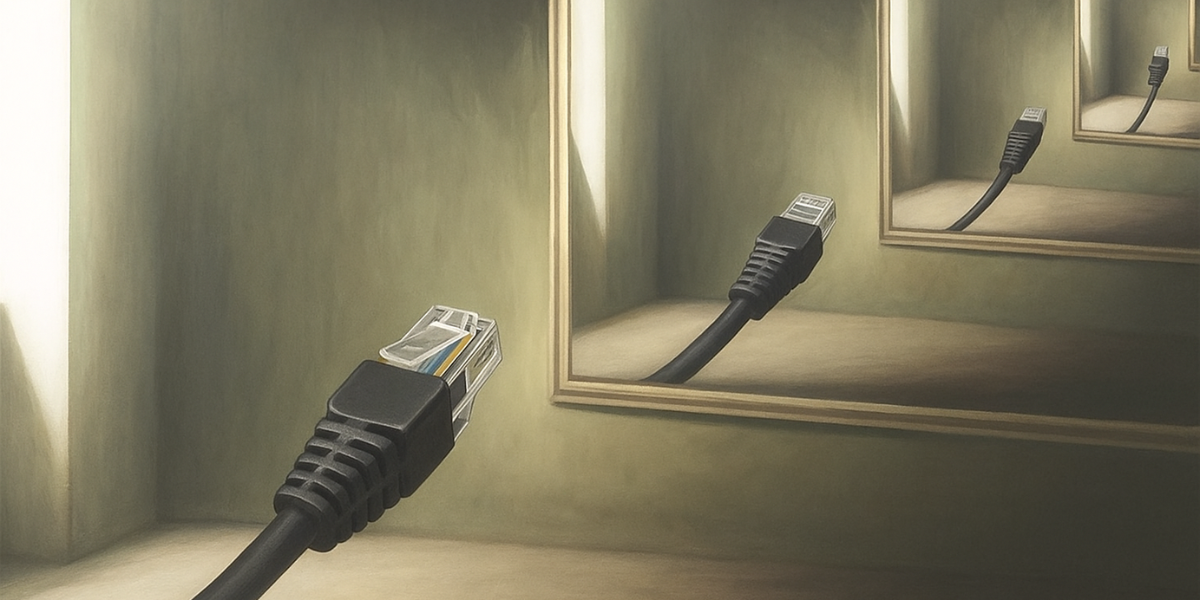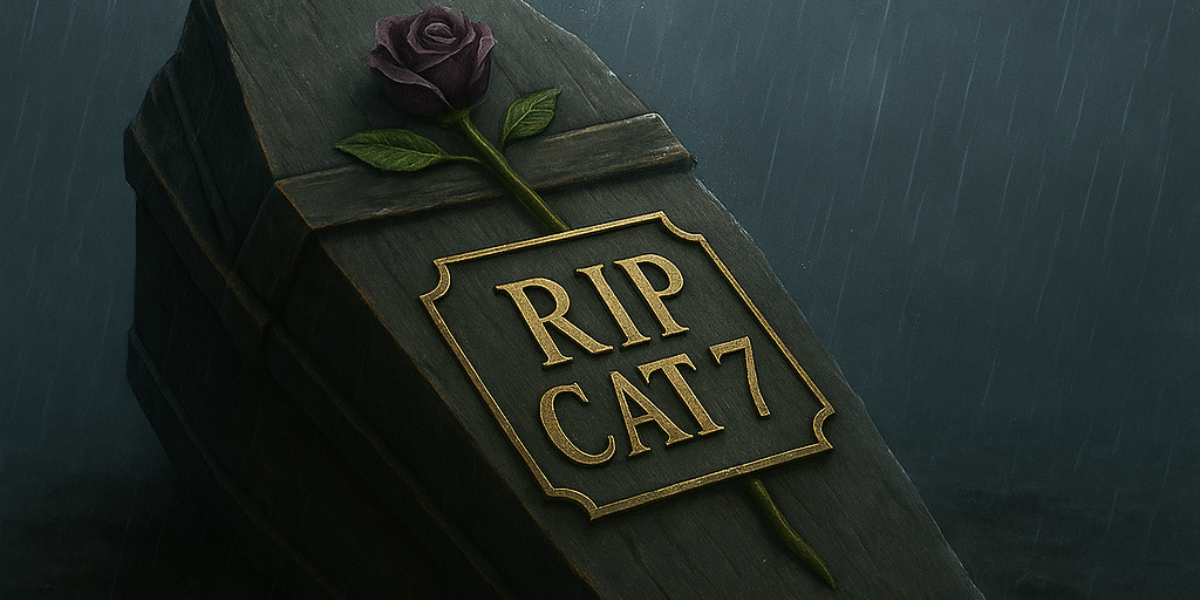Blog
With so many conspiracies full of unanswered questions, cables are probably the last thing you'd suspect. However, the mystery of what happened to Cat 7 still remains unsolved to this day.
From the early 2000s to the mid-2010s, Ethernet standards evolved rapidly - but not all contenders made it to widespread deployment. Here's a closer look at how Cat 7 rose on paper but fell in practice, while Cat 6A quietly became the backbone of modern networks.

The Category Crash
Category 7 was ratified in the same year as Category 6, in 2002. Despite both cables being capable of supporting 10 Gigabit Ethernet, it's natural to assume that a higher category means a better cable. However, the story of Cat 7 proves that technical superiority doesn't always translate to real-world success. Here's why:
- Connector Confusion - Instead of the industry standard RJ45 connector, Cat 7 used GG45 or TERA connectors, making it incompatible with most existing network hardware. This lack of backward compatibility discouraged adoption, especially when more practical, RJ45-based alternatives like Cat 6 offered similar performance when under 55 metres.
- Lack of Standards - Cat 7 was never officially recognized by ANSI/TIA. This meant it didn't meet the same recognition or industry acceptance as other cable options, such as Cat 5e or Cat 6. It remained mostly a European ISO/IEC standard (11801), limiting its global reach.
- Higher Cost - Cat 6 cables were cheaper than Cat 7 because they have less shielding, simpler construction, and use standard materials, making them easier and cheaper to manufacture. In contrast, Cat 7 cables feature more complex shielding, higher-quality materials, and stricter performance standards, increasing production costs.
- Less is More - While Cat 7 offered higher performance and better shielding, the actual need for such high levels wasn't widespread in the early 2000s. Cat 6 provided enough bandwidth which was sufficient for most networks at the time.
It quickly became a competition for both Cat 6 and Cat 7, creating confusion in the market. Some vendors leaned toward Cat 7 to future-proof installations, while others favoured Cat 6 due to its ease of installation and more affordability.

The Hidden Cat 6A Agenda
The ratification of Cat 6A in 2009 quickly overtook Cat 7, boasting of its dual standardisation and capability to support 10 Gigabit Ethernet (10GBASE-T). While it offers similar level of performance to Cat 7, it was more widely adopted. Here's why:
- Double the Standards - Cat 6A became widely adopted due to its dual ratification by both TIA and ISO/IEC, ensuring global standardization and broad compatibility with existing equipment. This made it a reliable, cost-effective choice for high-speed networks, unlike Cat 7, which standards are only ISO/IEC.
- RJ45 Compatible - Cat 6A uses standard RJ45 connectors, unlike Cat 7 which uses GG45 or TERA. This made installations and upgrades easier with an added bonus of being backward compatible with other systems, such as Cat 5e and Cat 6.
- Similar Performance - Despite its lower bandwidth of 500 Mhz, Cat 6A offers the same speeds as Cat 7 of up 10 Gbps over 100 metres while still providing excellent shielding and performance.
- Lower Cost - Terminated using an FTP keystone jack or euro module, Cat 6A cables are easier and less expensive to install in terms of labour and materials. In fact, Cat 6A is around £20 - £25 cheaper per cable than Cat 7 when terminated end-to-end.
Cat 7 and Cat 6A were competing to become the standard for high-speed Ethernet cabling, both offering support for 10 Gbps up to 100 metres, but they took very different approaches - and ultimately, Cat 6A came out on top.

Déjà Vu - Cat 7A
In 2010, Cat 7A was ratified in 2010 as an enhancement to Cat 7, primarily to support 40 Gigabit Ethernet over copper with higher frequencies of up to 1000 Mhz than compared to Cat 7's 600 Mhz.
Again, Cat 7A was never recognized by ANSI/TIA and continued to rely on GG45 and TERA connectors and the ISO/IEC standard, further limiting its compatibility and adoption. Added to this, with the ratification of Category 6A only a year ago, most users preferred the more affordable, standardized, and widely compatible RJ45-based solution.

Wrong Place, Wrong Time
Cat 7 and Cat 7A never gained widespread adoption, largely due to the timely and practical success of Cat 6A, which struck the perfect balance between performance, cost, and compatibility. While Cat 7 and 7A were technically impressive, offering enhanced shielding and higher bandwidths, they were ultimately solutions looking for a problem in an environment that wasn't ready for them.
One of the primary issues was timing. When Cat 7 was introduced in 2002, the 10GBASE-T Ethernet standard hadn't even been ratified - that wouldn't come until 2006. This meant Cat 7 was promising support for a protocol that didn't yet exist, leaving it without a real-world application to justify its higher cost and complexity. Then came Cat 7A, pushing performance further, but still lacking official recognition by ANSI/TIA and continuing to rely on non-standard GG45 or TERA connectors, which made integration into existing RJ45-based networks difficult and expensive.
Meanwhile, Cat 6A, ratified in 2008, arrived at exactly the right time. It offered 10 Gbps over 100 meters, used the standard RJ45 connector, and was fully backed by ANSI/TIA standards. Its ease of deployment, lower cost, and broad industry support made it the obvious choice for enterprise and commercial installations.
In short, Cat 7 and 7A were too far ahead of the networking infrastructure curve. They introduced high-performance features before the market truly needed them, and lacked the support and standardization required to become mainstream. Cat 6A, on the other hand, was just right in both capability and timing, making it the category that networks adopted and trusted - leaving Cat 7 and 7A as technical footnotes in Ethernet history.
Add a comment:
Get in Touch
Want to know what we can do for you? Please use this form to contact our team.






